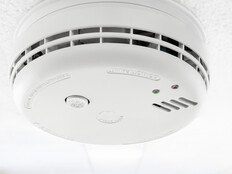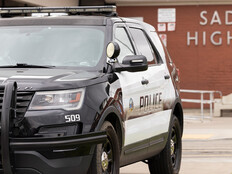There is a lot of sound in a K–12 setting: fire alarms, public address systems, school bells, student and teacher voices, audio from videos played in classrooms and on phones in the hallways, message notifications on laptops and personal devices. But in an emergency, administrators need a way to send a message that cuts through all of this noise, a unified alert that’s delivered across every available outlet.
Historically, schools have struggled to string together multiple systems — a disparate mix of PA systems, fire alarms and other miscellaneous tech — and hoped for the best.
However, the only way to ensure emergency messages are delivered on time to first responders and all the key individuals within a building is to use an interoperable platform. Interoperability occurs when two or more separate, individual systems work together.
“During emergencies, it is important that the right audio is heard at the right time and in the right place,” says Sean Penn, senior vice president of the education product portfolio at Boxlight.
EXPLORE: Boxlight solutions from CDW can help unify your school’s emergency alerts.
The Importance of Interoperable Technology for School Safety
While nearly every school building has the same cacophony of sounds to contend with, they don’t have the same technologies. State and federal laws, local ordinances, school board policies, and even the expectations of parents and the local community can impact a K–12 school’s tech investments, explains Penn.
In addition to the disparate technologies school buildings may have, there’s often yet another system for mass notifications related to inclement weather or other emergencies.
Running all of these systems simultaneously creates inefficiencies and increases potential errors and miscommunication. Administrators need a way to confidently send out multiple notifications — an audio announcement, messages on digital signage, warning lights — at the same time, while contacting local law enforcement if needed.
Click the banner to see school safety advice and trends from CDW’s experts.
“Automated response sequences save time so administrators can focus on the situation,” says Penn.
A real-time connection to local law enforcement is now required in many states: Alyssa’s Law — currently in force in nine states — requires schools to implement silent panic alarms that link directly to law enforcement.
“When everything works together to create a reliable and comprehensive communication solution, schools win,” says Penn. “Communication between systems enables users to accomplish tasks that no single product could do on its own.”
With interoperable technology, processes are simplified, automated and simultaneous, which is vital in situations where every second counts.
ON THE GO: One state equipped mobile incident command centers for school safety.
A Technology Ecosystem That Brings Mass Notifications Together
With Boxlight’s ATTENTION! ecosystem, multiple technologies come together to operate as one.
The solution has a digital-signage cloud content management platform that lets administrators create and distribute messages across the entire school’s or district’s displays as needed.
ATTENTION! also includes a communication solution that enables administrators to quickly adjust bell schedules or conduct a fire drill, and there’s a list of approved mass notification vendors whose technology seamlessly connects to Boxlight’s suite of products.
With this interconnection, Penn explains, a district-level administrator could press a button in their office that would lock down all the district’s schools and send audiovisual messaging through displays and PA systems. Using multiple methods to send alerts ensures that teachers, staff or students with visual or hearing impairments will be informed.
Click the banner below to explore other examples of school safety solutions.
It also reduces the burden on IT staff, who often must maintain various products and systems for countless devices. “From HVAC to safety, they are constantly being asked to do more with less,” says Penn.
Through ATTENTION!, schools not only decrease the number of systems that IT needs to monitor, they can also save money by eliminating redundancies.
What To Consider When Implementing Interoperable Safety Systems
Because one school’s tech landscape can look vastly different from another’s, there is no one-size-fits-all approach to implementation. Some schools may already be using an ATTENTION!-approved mass notification vendor, so their process will look different compared with a school that needs help bridging the gap between multiple systems.
FIND OUT MORE: Rural and urban schools tackle different physical security challenges.
The good news is IT leaders, administrators and teachers don’t have to figure this out on their own. Boxlight’s team works closely with these key stakeholders to ensure they have the proper training and support during implementation and beyond. “Interoperability is a journey,” Penn says.
Brought to you by:















